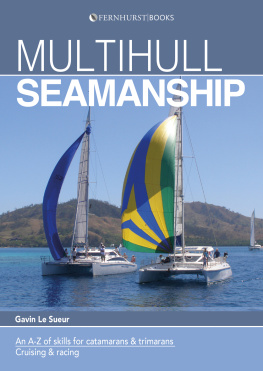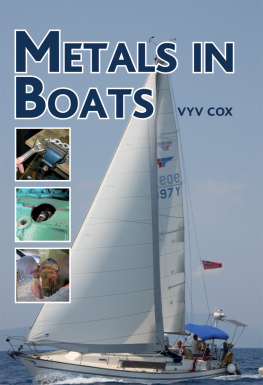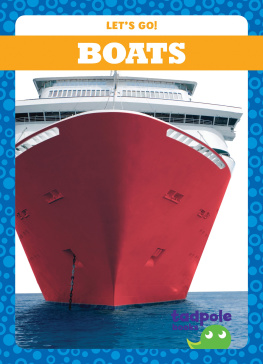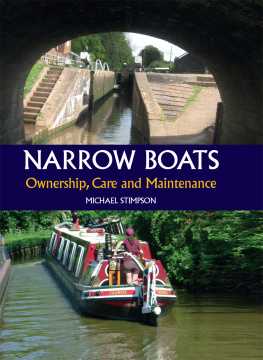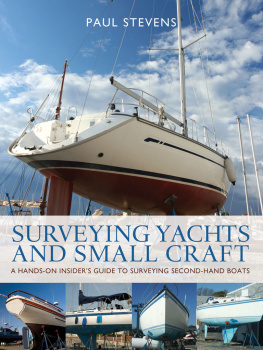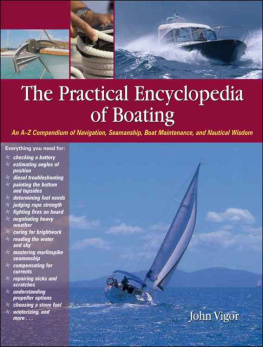Knowing YourMultihull
Catamarans, Trimarans,Proas
Must Know Information &Maintenance: Yachts, Sailing Yachts, Luxury Boats, Cabin Cruisers,New Boats, Used Boats, Boats for Sale and Small BoatDesigns
By John Marples
Copyright 2014 Published by JohnMarples at Smashwords
This ebook is published for yourenjoyment only. This ebook may not be re-sold or given away toother people. If you would like to shrare this ebook with anotherperson, please purchase an additional copy for each recipient. Ifyoure reading this ebook and did not purchase it, or it was notpurchased for your use only, then please return to smashwords.comand purchase your own copy. Thank you for respecting the hard workof this author.
This book is available in print at mostonline retailers.
Chapter 1 Introduction
This book comes from aseries of audio interviews featuring multihull designer JohnMarples. This audio series, also entitled, Knowing Your Multihull , was sowell-received by listeners, that I began thinking about thepossibility of having them transcribed, so ebook readers might alsoenjoy the rich multihull content contained within them. This bookis the result.
Some individuals enjoy readinginformation, instead of listening to audios. But whichever way youprefer to glean great content, youre in for a real treat. JohnMarples has been a multihull enthusiast, builder, sailor, boatdesigner and marine engineer for over 40 years. It would be hard tofind anyone more qualified to either speak about, or write about,the topics discussed in these pages.
Having said that, itsimportant for you, the reader, to know that any error of wording,phrasing or concept, which would have resulted from thetranscription process, isnt Johns fault. Ive taken care toprevent such mistakes, of course. I dont know of any errors, orelse they would have been corrected priorto publishing. So if you, dear reader, findsuch any such lapses within this text, then please let me know soit can be promptly corrected. Future readers will appreciate yourattentiveness, and I will most certainly appreciate any helpfulfeedback you share with us.
Its my privilege to bringthis multihull-related content to you. We multihullers love ourboats. But as John says, Theyre adifferent animal from monohulls . There aremany points made within this publication that demonstrate thattruth. And when you combine those points with the entire generalboat construction and maintenance knowledge found in these pages,then youre probably going to possess a ton more valuableinformation than you had prior to reading this book.
Now, get ready to know a LOT more aboutmultihulls! We hope you enjoy the rich, wonderful content found inthis unique book.
-- Joe Farinaccio, Publisher,www.OutRigMedia.com
Chapter 2 Different Types of Multihulls
Lets begin with a general overview oftrimarans, catamarans, and proas. Each of these classes refers todifferent types of multihulls. And its very important tounderstand that all of them are very different frommonohulls.
Some of these are production boats. Themajority of those were going to look at here, however, are boatsthat just about anyone can build at home, either in a backyard orshop. But were also going to look at a couple of very large,high-tech, ships. These boats include the full spectrum of whatyou'd expect to see in boats of any size.
Trimarans
Lets begin with trimarans. Trimaranscan be very interesting. Some people don't quite understand whytrimarans exist. I always say that they're more like regular boatswith training wheels,
A trimaran is, of course, athree-hulled boat. In the past, most trimarans were home-built. Isee many of these for sale all over the Internet. But there arevarious production boats made with the latest fiberglass moldingmethods nowadays.
The one pictured here is a trimarandesigned by Arthur Piver. Piver is the guy who is basicallyattributed to being the father of the modern trimaran. He put threehulls together and even designed a number of models with a livableinterior. He popularized trimarans back in the 1960s.
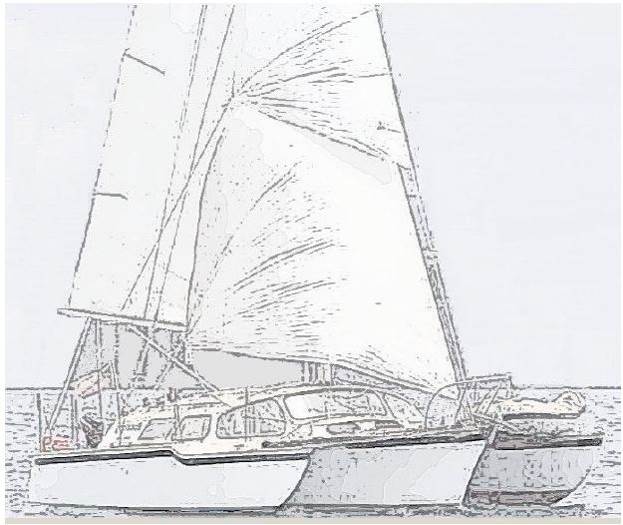
A lot of Pivers designs are stillaround today. In fact, one of these old models may be the bestopportunity to find a used boat for the least amount ofmoney.
If a Piver-designed boat was properlybuilt to begin with, has been well-maintained and ventilated, thenit may be a bargain. These boats usually arent expensive becausethey represent older designs. It's like buying a '58 Buick that'sbeen in the garage for the last 30 years. It's got a lot of milesleft on it, but it's not the newest thing on the block.
The next one pictured is one of my owndesigns a Searunner 37. I built this one when I was 23 years old,in my own backyard. It was built out of standard plywood andlumber. All of the materials came from the local lumberyard.
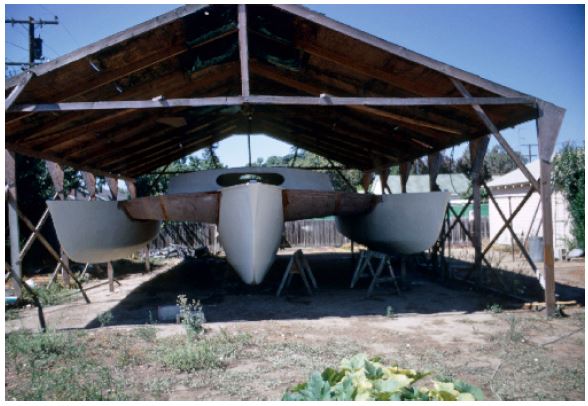
I covered the hulls with fiberglasssheathing and then coated it with polyester resin. These days, thefiberglass would be covered with epoxy resin instead. Epoxy is alot stronger.
This particular boat is still alivethough. As a matter of fact, I personally surveyed it not too longago. At the time of this writing, the boat was being enjoyed by its3rd owner and its 41 years old.
It has also sailed thousands of milessince this last survey. (This next photo was taken during mysurvey-examination of the boat.)
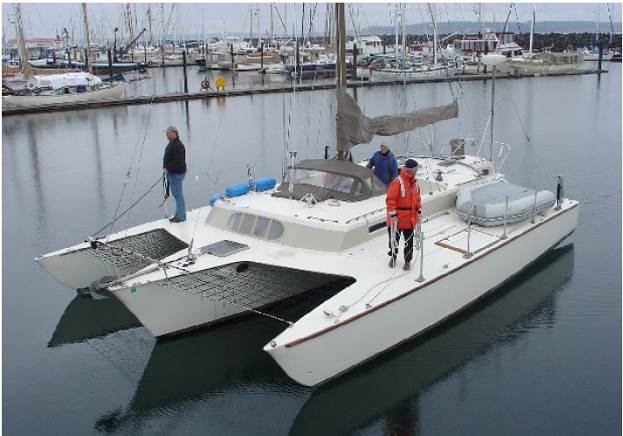
The 2nd owner of this boat had takenvery good care of it. He upgraded it with a new electrical systemand a recent diesel engine. He also changed out the rigging andchain plates.
The owner performed all of thesechanges himself. He is a technical person and understood how to dothings properly. When he came across something that he didnt knowhow to do he called me up and used me as a consultant.
That just shows you that a 40-year-oldplywood trimaran can be maintained in good shape. It's not going torot away within the first week. This boat is ready to go across theocean again today.
The next sketch features a familiarproduction trimaran its designed by Ian Farrier. Its a folding,trailerable boat that's 27 feet long.
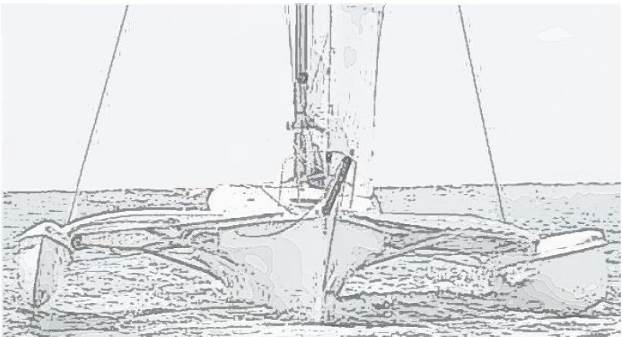
These models are among the more popularproduction trimarans today. They're very popular because they werea production boat.
Their value is easily established onthe market because there are lots of them identically built andbacked up by a manufacturer and distributors. This makes itrelatively easy to get insurance for them. Theyre also easier toobtain financing for when purchasing. It can often be moredifficult to obtain financing and insurance for olderboats.
The next sketch features theBenchijigua Express. It's a 215 foot long power trimaran thatserves as a freight service into the Canary Islands.

This boat can go up to 40 knots, andit's extremely efficient and features lots of deck space. Itcarries cars and passengers and freight.
Next page


